THE BEST PEST CONTROL WITH HYDROGARDEN
It’s been an unusually cold start to the year in the UK. Many of us were still seeing snow and ground frost well into April.

This certainly meant that (through Spring at least) growers were less pestered by pests. But as Summer is around the corner and it’s starting to get warmer, we’re sure they’ll be back with a vengeance.
Dealing with growroom and greenhouse pests can be overwhelming. If an infestation gets really nasty, crop damage can be severe. Many pests target young, fresh growth – buds and shoots – so the potential for damage in terms of yield cannot be overstated.
At HydroGarden we spend a lot of time thinking about how we can bring the best products into the market to meet the needs that growers have. So, unsurprisingly, we’ve given a lot of attention to the subject of pests, tapping into expert knowledge, and trialling and testing products on our own plants.
The best advice we can offer growers is this: don’t leave it a couple of days between noticing any of these pests, and then starting the treatment. Identifying and treating early is key! Pests reproduce really quickly – a female spider mite lays up to 20 eggs per day – so a few days really can be the difference between a small problem, and a full-blown infestation…
Encourage your customers to stock up and have these products to hand: the sooner they can identify the issue and start treating the infestation, the better!
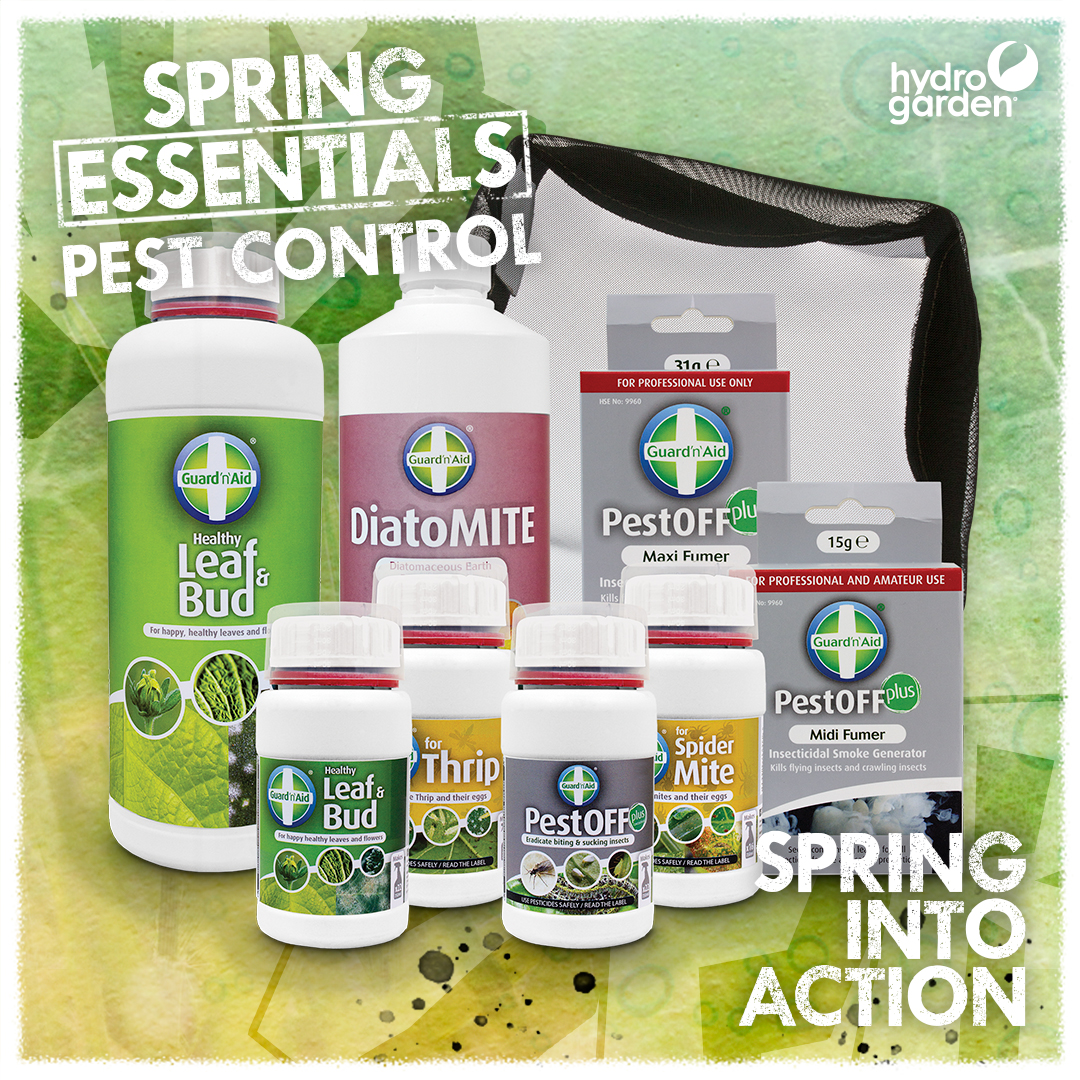
This certainly meant that (through Spring at least) growers were less pestered by pests. But as Summer is around the corner and it’s starting to get warmer, we’re sure they’ll be back with a vengeance.
Dealing with growroom and greenhouse pests can be overwhelming. If an infestation gets really nasty, crop damage can be severe. Many pests target young, fresh growth – buds and shoots – so the potential for damage in terms of yield cannot be overstated.
At HydroGarden we spend a lot of time thinking about how we can bring the best products into the market to meet the needs that growers have. So, unsurprisingly, we’ve given a lot of attention to the subject of pests, tapping into expert knowledge, and trialling and testing products on our own plants.
The best advice we can offer growers is this: don’t leave it a couple of days between noticing any of these pests, and then starting the treatment. Identifying and treating early is key! Pests reproduce really quickly – a female spider mite lays up to 20 eggs per day – so a few days really can be the difference between a small problem, and a full-blown infestation…
Encourage your customers to stock up and have these products to hand: the sooner they can identify the issue and start treating the infestation, the better!
FIVE PESKY PESTS AND HOW WE HANDLE THEM!
1. Spider Mites
These nasty little things really are a curse for indoor growers. They are fairly hard to see with the naked eye, until they start creating webs all over the backs of leaves.
But by the point that you’re noticing their webs, the infestation will be pretty bad already. Don’t let it get to that stage. Use a magnification device like the PHONESCOPE to spot them.
Spider mites love to hide in hard to see places, so make sure you’re checking under the leaves and around the nodes of newly developing leaves, as those little cracks and crevasses could shield mites and their eggs.
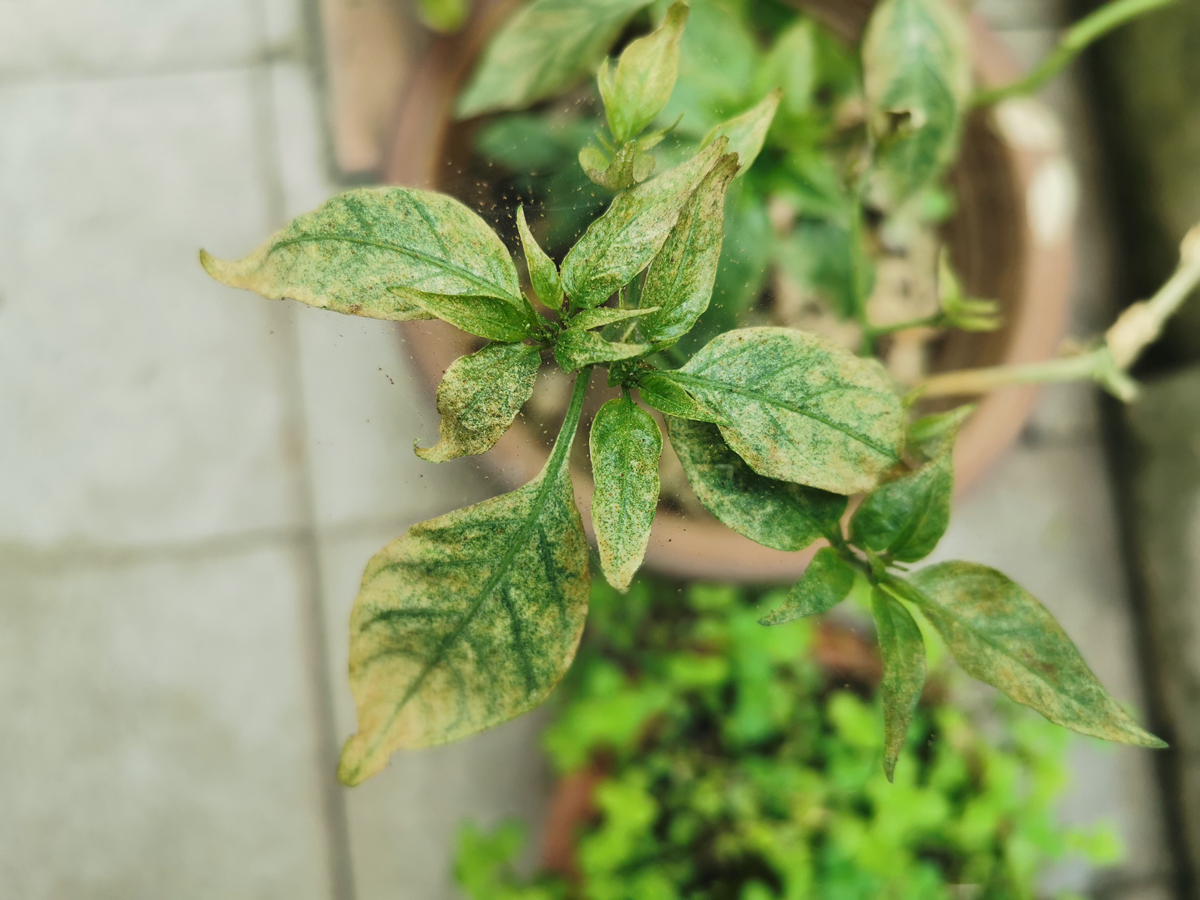
What to do
Spider Mites love it when it’s hot and dry, so one of the key things to prevent an infestation is to watch that humidity level. The DIGITAL SERIES MIN MAX THERMOMETER & HYGROMETER gives growers an easy read for humidity. Adding a RAM ULTRASONIC HUMIDIFIER will help keep humidity above 60% - ideal to discourage these little pests.
It’s important to remember that Spider Mites aren’t technically insects – which means regular insecticides won’t work! Choose a product specifically formulated to stop these tiny arachnids. We love GUARD'N'AID FOR SPIDERMITE, which does a bang-up job of killing the mites and their eggs.
2. Thrips
These tiny terrors are even harder to spot than Spider Mites. More likely you’ll notice their droppings (which look like black specks), or you’ll just notice the damage they’re doing to your plant’s leaves – leaving them blotchy, malformed, and covered in small silvery/grey spots on the leaf surface.
What’s worse is that thrips are even harder to spot when they are larvae – but this is when they are the most destructive. The ESSENTIALS ILLUMINATED MICROSCOPE will give the magnification you need to spot this pest.

What to do
Thrips are quite different at each stage of their lifecycle, so it’s important to use an all-round product that kills the eggs and larvae as well as the visible adult thrips. GUARD'N'AID FOR THRIPis an insecticide specifically developed to kill thrips.
But as thrips and their larvae are so small, it can be easy to think you’ve sprayed them all… and be mistaken. You only need to miss a few for that infestation to come back. An adult female thrip can create up to 50 new thrips in their lifetime!
When you just can’t seem to get rid of them and they keep coming back, you need to treat your entire growing environment. Fumigation is a fantastic way to make sure that even awkward, difficult to reach places get a good dose of insecticide. A fumer like the GUARD'N'AID PESTOFF PLUS MIDI FUMER is simple to set up and ideal for this purpose, however, if you go down the fumigation route, wait until you are between grows – otherwise you’ll end up with a room of dead plants as well as dead thrips.
3. Aphids
Aphids can be incredibly destructive. Fortunately, they are a bit easier to spot – typically these little green or black insects form clusters – but you don’t want to waste any time treating the infestation once you’ve noticed them. They breed like wildfire and they’ll eat masses of leaves and buds in the process.
To top it off, because they’re so busy enjoying your plant’s sugars, these bugs excrete a sticky, sugary waste product which can attract dark mould.
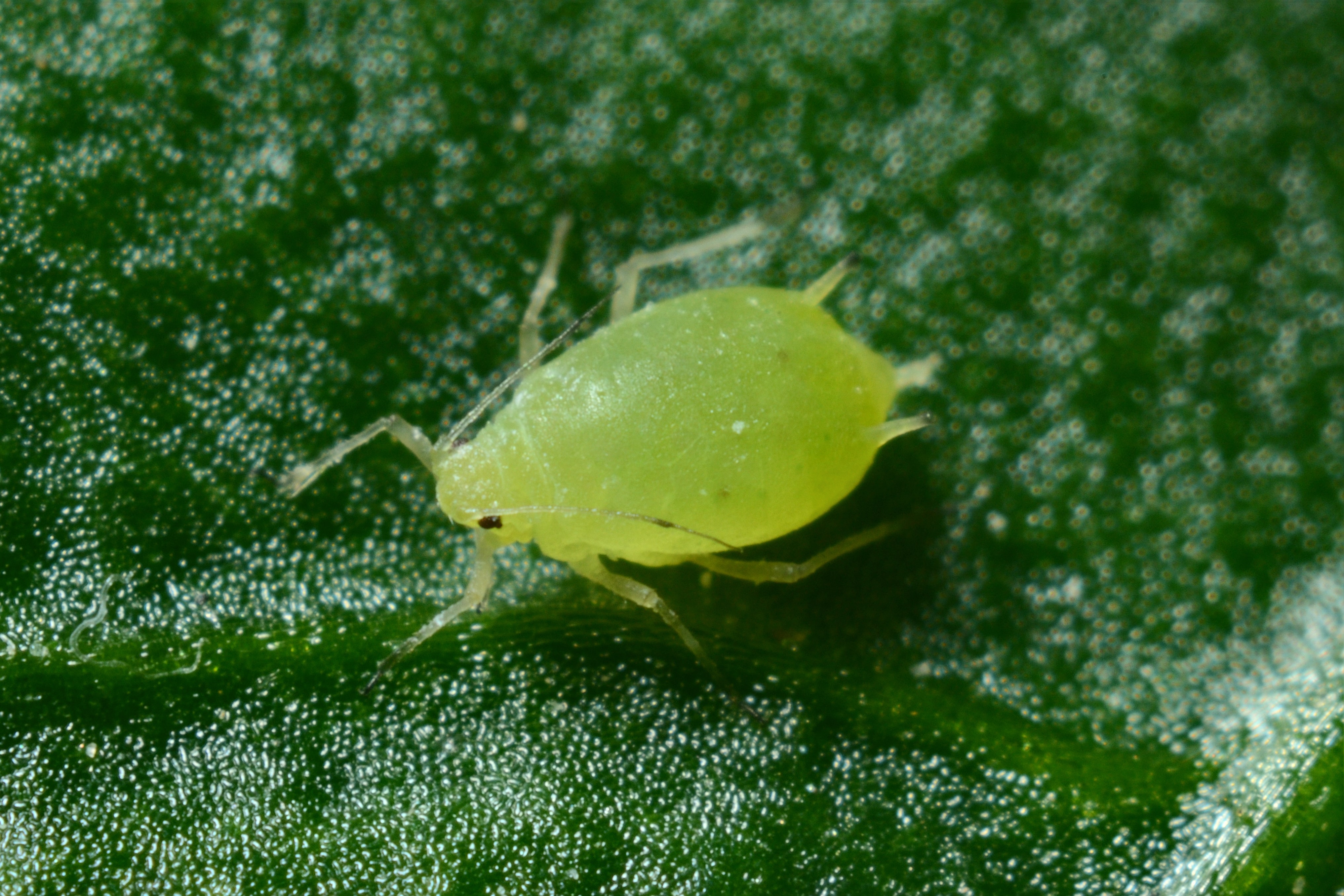
What to do
Don’t let an aphid infestation take a foothold. Use a variety of strategies to get them gone.
Because these insects often form little clusters or clumps on plants, you can fairly easily see where you need to spray an insecticide. GUARD'N'AID PESTOFF PLUS CONCENTRATE works on contact with the bugs, so give them a good spray.
Once your insecticide spray application has dried completely, you can dust the plant with GUARD'N'AID DIATOMITE. If any aphids are left after the insecticide, this will finish them off. This product is 100% natural and food safe, but it wreaks havoc on tiny insects by covering them in microscopic scratches.
4. Fungus Gnats/Sciarid Flies
These small, slow-moving black flies, are much less destructive than some of the other pests on this list. While annoying, they do not suck the sap out of your plants like aphids and spider mites. However, they cause an issue when they lay their eggs in the substrate. These eggs hatch into larvae that feed on plant matter within the substrate – including roots.
Hanging sticky traps like the GUARD'N'AID INSECT CATCHER around your plants can help you spot these nasties early on.
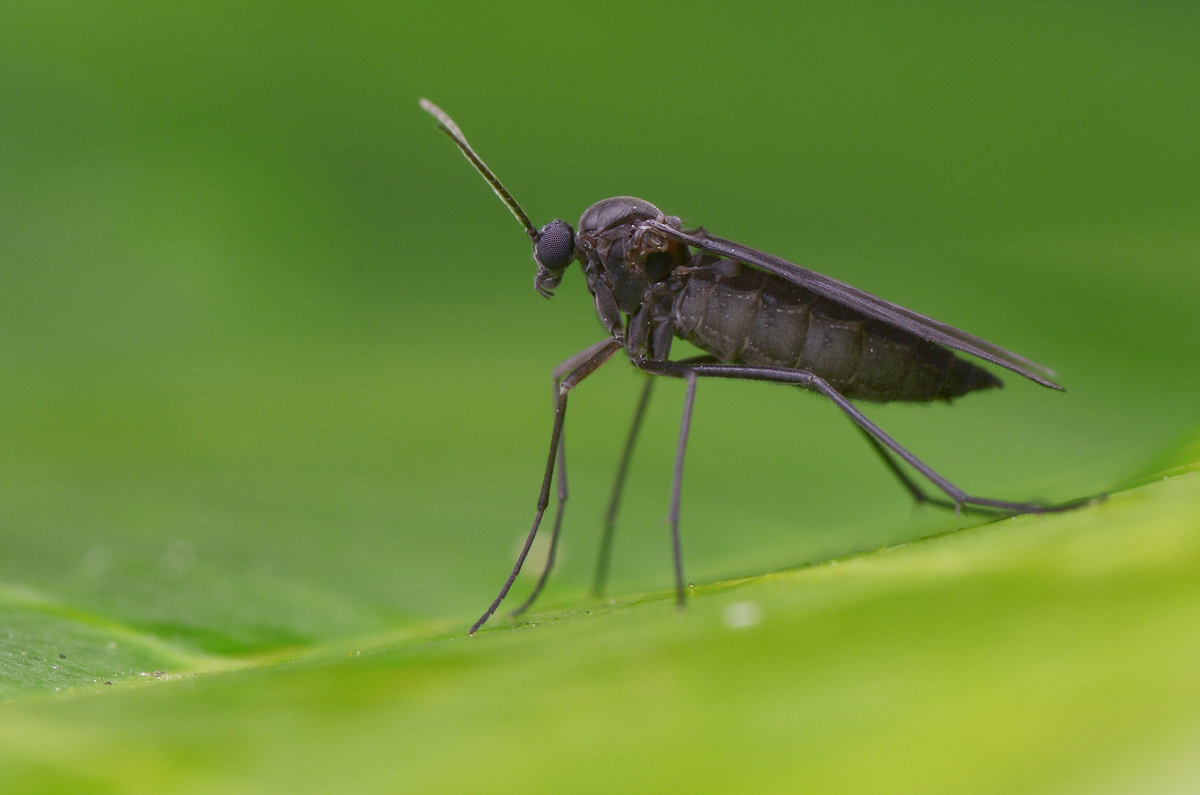
What to do
If you have fungus gnats, this is probably a sign that you are over-watering, or that your plants are suffering from poor drainage.
These little flies like to lay their eggs in fairly wet, organic substrate, so by making a few changes you can break that cycle and make the environment unpleasant to them. Switch to an inert media like VITALINK CLAY PEBBLES, or review your watering regime so that your substrate is not standing wet for a long time.
5. Whiteflies
Whiteflies thrive in warm, dry conditions, which makes them a real menace to the indoor grower. Once these pests have set up shop, they can be incredibly hard to get rid of, so it’s worth putting steps in place to prevent an infestation from happening in the first place.
Both the adults and the larvae feed on plant sap, and they can easily spread diseases to your plants while they feed off them. Whiteflies also leave behind a sticky residue that can attract mould to your plants.
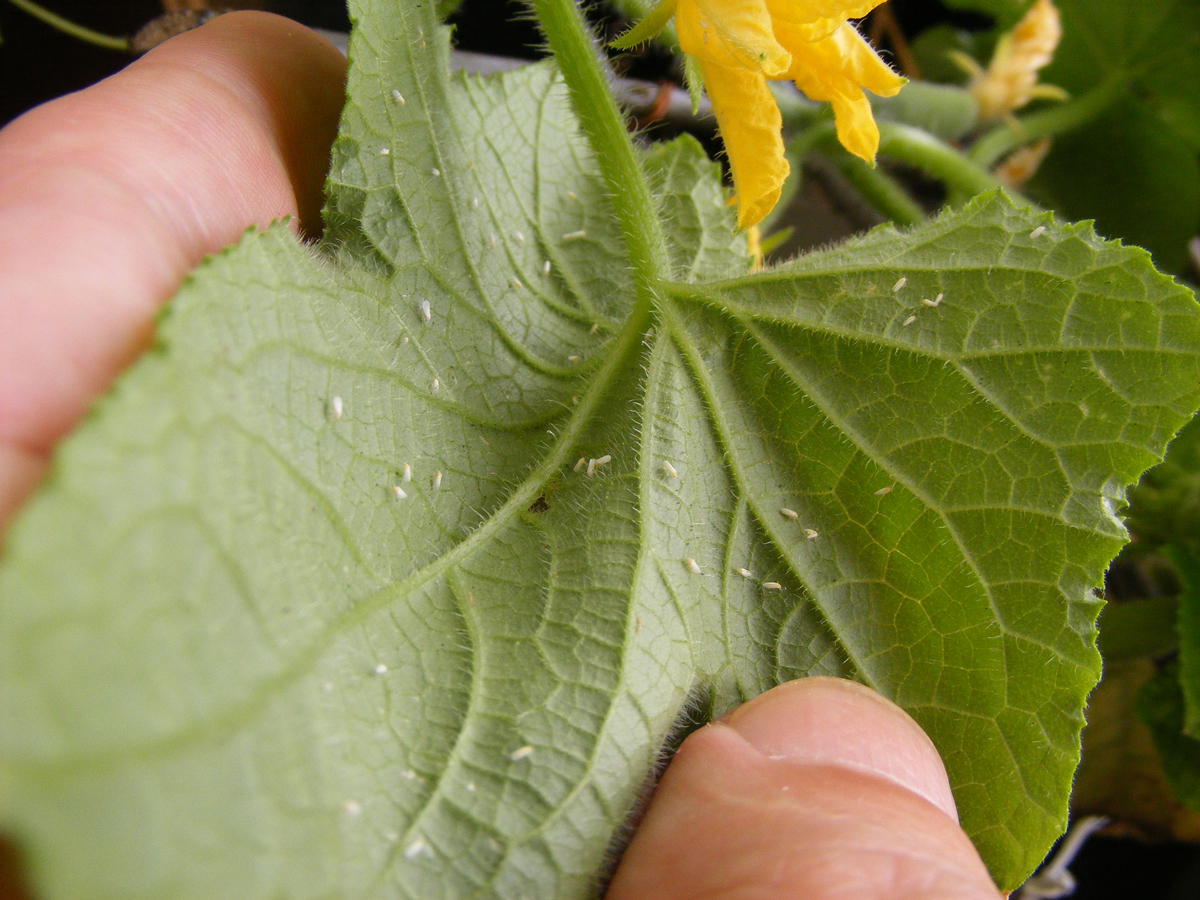
What to do
Whiteflies are going to be more of a problem as your environment gets hotter, as they like it nice and toasty. So one simple way you can make a whitefly infestation less likely is to cool your growroom down. A RAM AIR CIRCULATOR will not only help with cooling, but the air movement created by the circulator will make the environment less appealing to these flying pests.
If an infestation has taken a foothold, up the ante by spraying with CANNACURE. For a really heavy infestation, follow the instructions for repeat treatments to make 100% sure you get all of them!
If you would like to start stocking any of these products and have some questions, or if you want any marketing material to help promote these products to your customers, have a chat with your Rep or get in touch with us at socialmedia@hydrogarden.co.uk!

 English (United Kingdom)
English (United Kingdom)
 Français
Français
